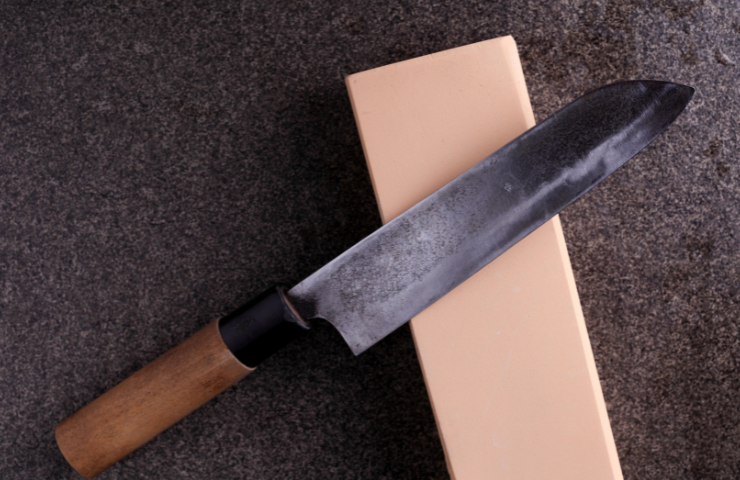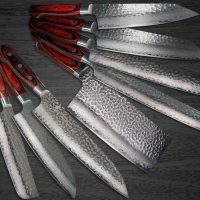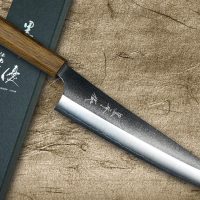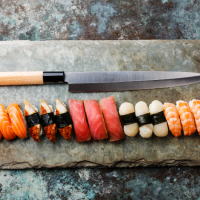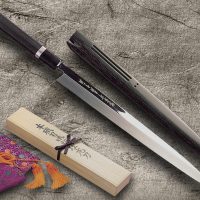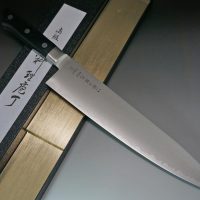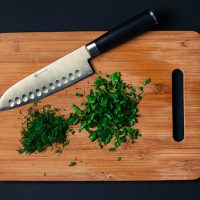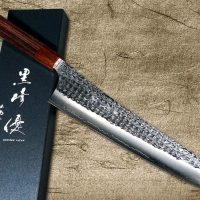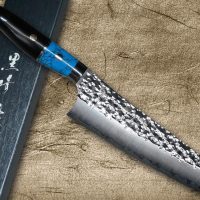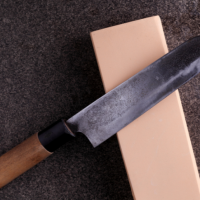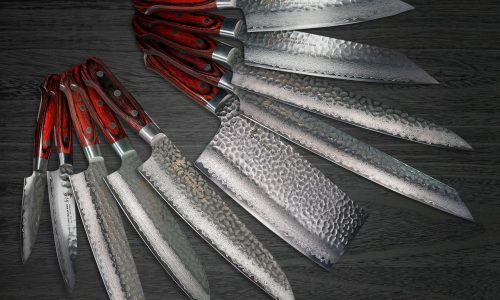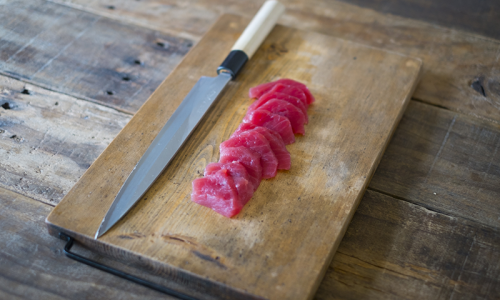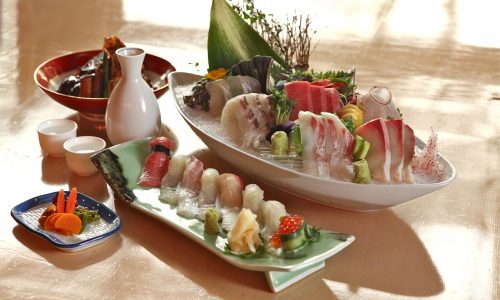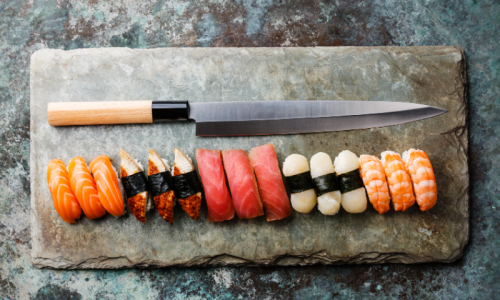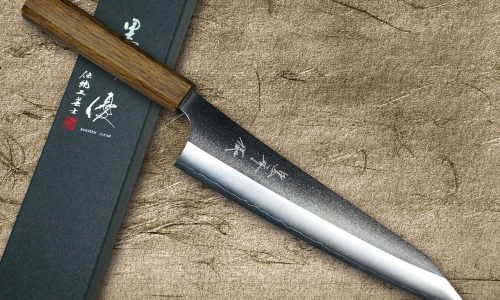The Sujihiki knife, also known as the Japanese slicing knife, is an integral part of the culinary world, especially in Japanese cuisine. Here are its distinctive features that set it apart:
- Long and Narrow Blade: Sujihiki knives typically have a long, slender blade, often ranging from 24 to 30 cm in length. This design helps achieve a clean, one-stroke slice, making it perfect for precise cuts.
- Double-Bevel Edge: Unlike many traditional Japanese knives that have a single-bevel edge, the Sujihiki knife features a double-bevel edge. This means the blade is sharpened on both sides, a feature that suits both right and left-handed users.
- Superior Sharpness: Thanks to high-carbon stainless steel often used in the construction, Sujihiki knives possess exceptional sharpness and durability. This allows them to slice through ingredients with minimal damage to the ingredient’s cell structure, preserving the texture and taste.
- Versatility: While it’s excellent for slicing meat, fish, and sushi rolls, its applications aren’t limited to these alone. The Sujihiki knife is versatile enough to handle a wide range of slicing tasks in the kitchen.
- Traditional Craftsmanship: Like many Japanese knives, each Sujihiki knife is a product of expert craftsmanship. Many are hand-forged and meticulously sharpened, symbolizing the centuries-old Japanese tradition of knife-making.
In conclusion, the Sujihiki knife is not just a kitchen tool but a reflection of the high standards, precision, and tradition that underpin Japanese cuisine and culinary arts. Whether you are a professional chef or a home cook, this Japanese slicing knife can truly elevate your slicing experience and the overall cooking process.

